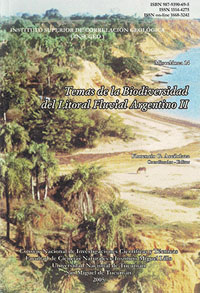Miscelánea 14
Historia geológica del Iberá, provincia de Corrientes, como escenario de biodiversidad
Descargar trabajo en formato PDFAbstract
GEOLOGICAL HISTORY OF THE IBERÁ AS SCENARY OF BIODIVERSITY. The Iberá region, located in the North-East of Corrientes Province (Argentina), integrates one of the bigger wetlands of South America. with a surface covering more than 13.000 km2. Its biological diversity is similar to that of the Paraná River, in despite of the absence of a geographical connection between them. In order to explain this fact, the geological history from the Precambrian to the Present is reconstructed, with emphasis in the last steps of the evolutive process. The Iberá region was a wide fluvial belt from the Pliocene with low sinuosity braided channels separated by sandy natural levees. This fluvial system related with the origin of the Paraná River, deposited the extense Ituzaingó Formation with outcrops in the inner of the studied area. The epirogenic movements of the sub-surface basaltic blocks generated local changes of the slope, modifying the drainage direction. The Paraná paleochannel abandoned gradually the central depression of Corrientes, changing to the present course that shows structural control. The fluvial belt was transformed in interconnected waterbodies that receive the influence of local rains and probably the undergrown transfluence from Yacyretá Dam located at the headwater of the system.






